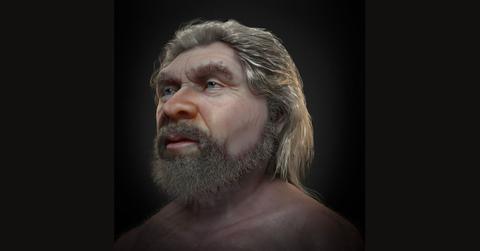Ancient Infections: Neanderthal Bones Yield Oldest Human Viruses on Record, Dating Back 50,000 Years

Researchers previously discovered that Neanderthals carried three viruses that still affect humans today.
Researchers have uncovered evidence that Neanderthals, who lived 50,000 years ago, carried three viruses that still affect humans today.
These ancient viral remnants, dating back further than any previous findings, shed light on the health challenges faced by our ancient relatives.
New Scientist reported that these traces of ancient viruses predate the previous record-holder by about 20,000 years.
They were discovered in the DNA sequences extracted from the remains of two male Neanderthals found in the Chagyrskaya cave in the Altai mountains of Russia.
By scrutinizing these genetic sequences, scientists identified similarities to modern viruses known to cause persistent infections. Through meticulous comparison, they ruled out contamination from modern humans or predators, confirming that Neanderthals carried these viruses.
Among the viruses detected were adenovirus, herpesvirus and papillomavirus, which can cause a variety of ailments in modern humans, ranging from cold- and flu-like symptoms to genital warts and certain cancers. The herpesvirus closely resembled the strain responsible for cold sores.
- What Lies Beneath: NASA Scientist Believes Aliens May Have Found 'Perfect' Hiding Spot in Earth's Oceans
- Global Threat: Russia Insider Warns West of 'World War Using Nuclear Weapons' Amid Escalating Support for Ukraine
- Countdown to Disaster? Ex-NATO Official Warns Russia, Iran and China Could Wage WWIII in Just Years
This discovery fuels speculation that viral infections might have contributed to the extinction of Neanderthals around 40,000 years ago. Published on the preprint server bioRxiv, the findings are yet to undergo peer review.
While the prospect of resurrecting ancient viruses raises concerns, experts suggest it's currently improbable due to our limited understanding of how to reconstruct viral genomes from fragmented DNA.
Never miss a story — sign up for the Front Page Detectives newsletter. Be on the scene the moment news breaks.
Marcelo Briones, co-senior author of the study and a professor at the Federal University of São Paulo in Brazil, believes that unraveling ancient viral DNA could provide valuable insights into both past and present diseases.
However, Sally Wasef, a paleogeneticist at Queensland University of Technology in Australia, remains skeptical about the feasibility of this endeavor.
As research in ancient virology progresses, it promises to enhance our understanding of diseases across human history and bolster efforts to combat modern ailments.
Become a Front Page Detective
Sign up to receive breaking
Front Page Detectives
news and exclusive investigations.
